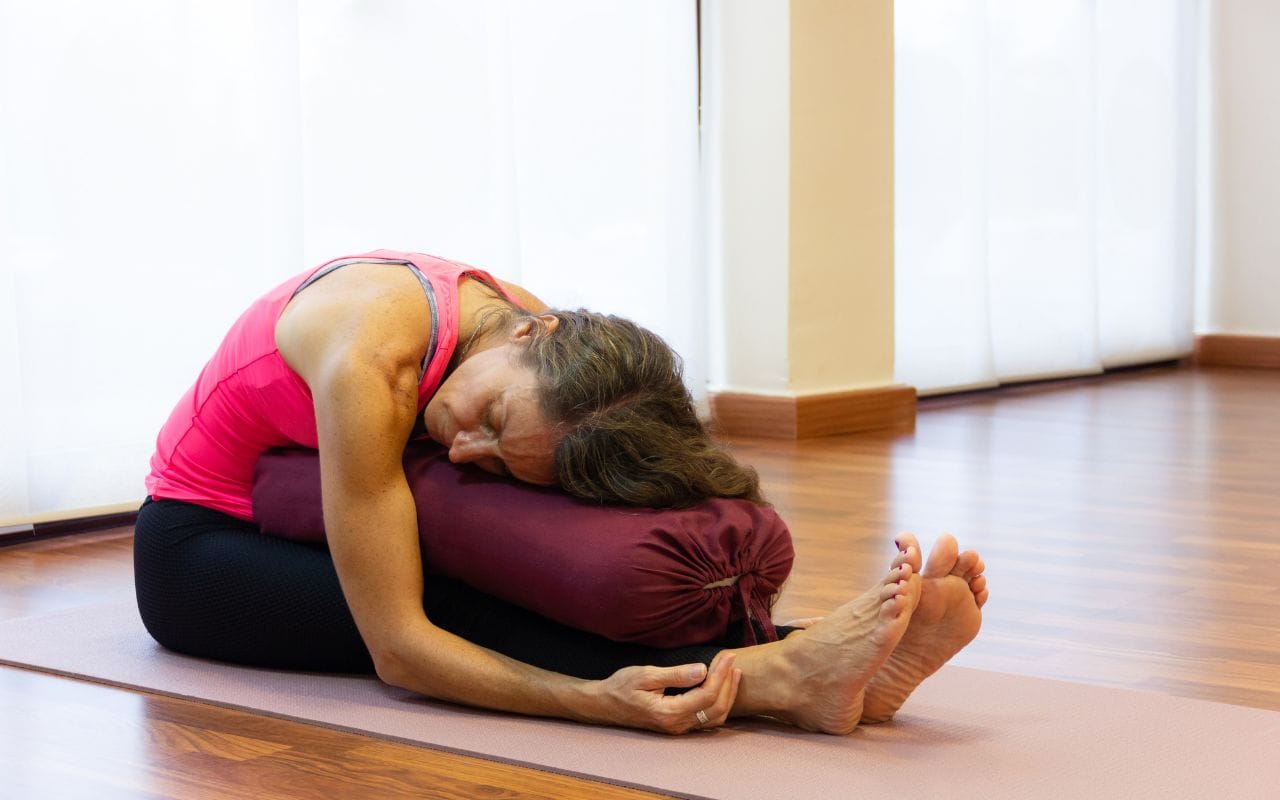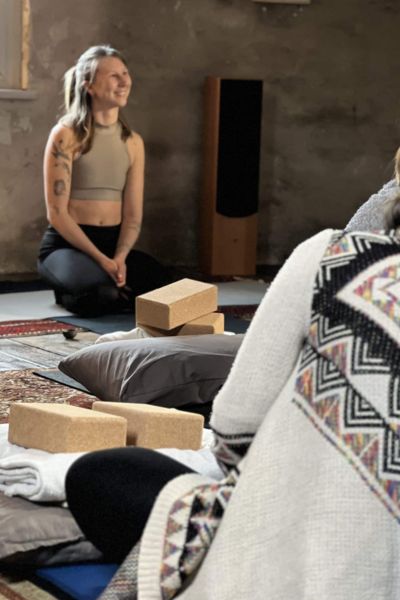Yin and Sound is the perfect combination of healing instruments like Tibetan singing bowls, Koshi, Kalimba etc and longer holds of relaxing asanas to get into the deep fascias and release (emotional) tension without body and mind.
Many people use yoga as a workout tool to heat up, power out and sweat. And that's what a yang-focused practice is. It is any type of Vinyasa, Hatha, Ashtanga practice, that increases our yang energy within our body. These practices keep our heart rate up through dynamic movement, strong flows and challenging asanas.
In a world where we constantly have stimuli from the outside, keeping our minds busy 24/7, we tend to have too much energy and/or be tired at the same time. But at some point, we need to process all the information that we are continuously gathering. Our body and mind are in constant fight or flight – our sympathetic nervous system – if we do not give it time to rest. The sympathetic nervous system is turned on in dangerous situations and helps us to survive. It is our flight or fight mode, where stress hormones like cortisol and noradrenaline are released. The parasympathetic nervous system regulates all important processes responsible for detox, cell renewal, and digestion. It's our rest and digest mode.
Evolutionary this makes a lot of sense. Back in the days when we lived in the jungle/forest and the 'only' stress factors or dangers we had were wild animals like venomous snakes or bears, and our body needed to turn in the sympathetic nervous system in order to survive. Our sympathetic nervous system is stimulated for the duration of the danger, which could have lasted 10-30 minutes (more or less). Afterwards, we directly came back to rest and digest. Today our stress factors are much different, but the reaction from our body stays the same. Our nervous system does not know the difference. Today, we barely relax. Regular stress factors like pressure from the outside world, job, loved ones, etc. keep our fight or flight mode turned on as these factors don't just vanish, which in reverse hinders our system from working properly and keeping relevant processes alive.
Yin Yoga teaches us to be more aware of our body as it is a feminine, more passive way of doing yoga asana practice. Mentally, we are taught to be fully present and accept our body where it is right at that moment. Due to the long duration of holds, we are forced to not go 100% into a posture, but stay at around 70% to prevent injuries. Our mind has time to calm down, taking us into rest and digest, our parasympathetic nervous system.
Holding poses for up to 7 minutes, but at least longer than 90 seconds triggers the production of collagen fibres, elastin and hyaluronic acid in our fasciae. This strengthens and lengthens the deep tissues and makes our body more mobile, flexible and increases the range of motion. As well as this, we have connective tissue within our body. As the name says connecting or glueing together our muscles, tendons, bones, organs, skin etc. and gives them stability. If these tissues are not properly used and stretched, they become stiff, which makes our body more prone to injuries through sudden falls or shocks. Our blood and water circulation is supported and thus the removal of excess toxins. Oxygen is transported into our cells and cells can be renewed.







